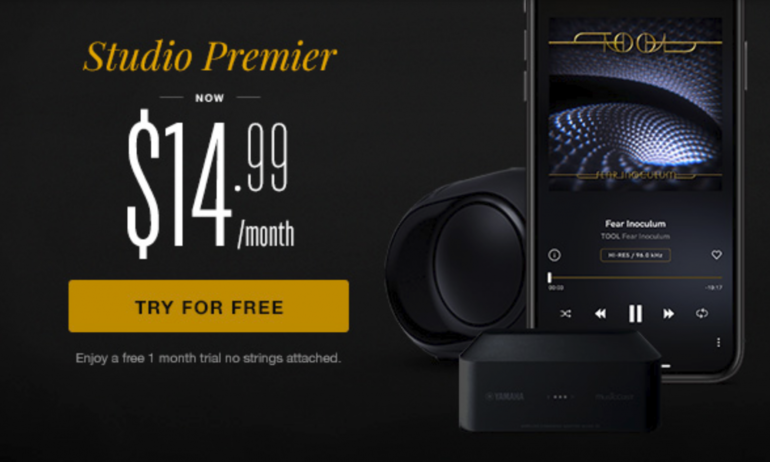
#Qobuz studio Bluetooth#
#Qobuz studio download#
And isn't that what we want?Īlthough hi-res audio songs and albums have been available to download for several years now, streaming hi-res audio is relatively new across popular music subscription platforms – and some still don't offer it.įor more information on high resolution, read our everything you need to know about high-resolution audio article. Provided your system is transparent enough, playing hi-res music can bring you more detail and texture, thus bringing you closer to what the artist wanted to say when they recorded their work. The hi-res 24-bit/96kHz or 24-bit/192kHz files should, therefore, more closely replicate the sound quality the musicians and engineers were working with in the studio. Music CDs are 1411kbps – remember, they're your starting marker for hi-res. A 24-bit/192kHz file takes that to 9216kbps.

The highest quality MP3 has a bitrate of 320kbps. To illustrate why hi-res should sound better than, say, an MP3, we need simply to compare the relative bitrates (the amount of information being transferred measured in kilobits per second). Obviously, this affects the sound quality. This 'lossy' compression means that certain data is scrapped in the encoding process for the sake of convenience and smaller file sizes.
#Qobuz studio 320kbps#
Until Spotify Hi-Fi arrives, all streams from Spotify use compressed file formats with relatively low bitrates, such as 320kbps Ogg Vorbis streams on Spotify Premium. In numbers, it's a jump from 96dB to 144dB, which is huge. Going from 16 to 24 bits results in a massive increase in dynamic range, which is the gap between the quietest and loudest sounds that can be captured. The first number is bit-depth, which indicates the number of 'bits' of information present in each sample of the signal. The higher the sampling rate, the more times the audio signal has been sampled, and thus the more detail resolution you get. Sampling rate – the second number – refers to the number of times per second that the wave is measured during the analogue-to-digital conversion process.

So what do the numbers mean? It might help to think of an audio signal as a sound wave being plotted on a graph. So a hi-res file can be 24-bit/44.1kHz, where bit-depth is higher than CD quality but the sampling rate is the same, and vice versa. First things first, should you care about hi-res streaming? High-resolution (often shortened to 'hi-res') audio is a term used to describe music files that have a higher sampling frequency and/or bit depth than that of CD quality, which is specified at 16-bit/44.1kHz.


 0 kommentar(er)
0 kommentar(er)
